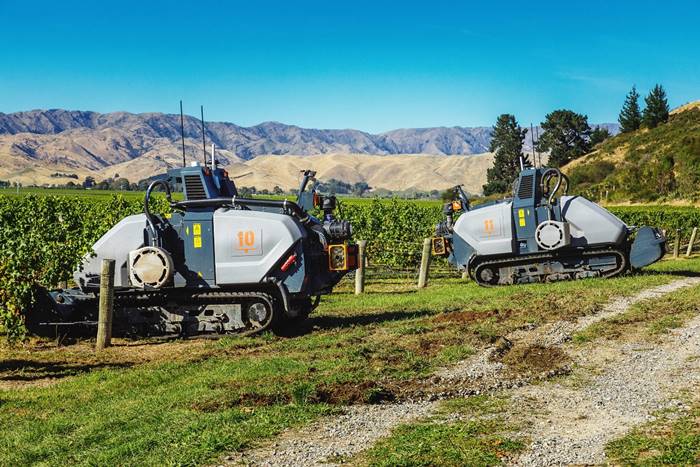AI Takes the Reins in New Zealand Vineyards
AI-Powered Robots Optimize Wine Production in New Zealand
2024-07-27

In a bold move towards the future, Pernod Ricard, one of the world's leading wine producers, has taken a significant step in modernizing its vineyard operations by integrating a fleet of robots in its New Zealand vineyards. This cutting-edge initiative, in collaboration with the technology company Smart Machine, highlights the increasing adoption of robotics in agriculture, aiming to enhance efficiency and address persistent challenges such as labor shortages.
The robots, known as Oxin AVT, are a testament to the innovative application of artificial intelligence in the agricultural sector. These advanced machines are designed to perform labor-intensive tasks that are crucial for vineyard maintenance, such as monitoring and controlling conditions, mowing, mulching, and leaf removal. Equipped with sophisticated technology including infrared and RGB cameras, LiDAR sensors, and radar, the Oxin AVT robots can navigate the vineyard terrain safely and efficiently.
One of the standout features of these robots is their ability to follow predefined pathways through the vineyard rows, executing their tasks with precision. They are programmed to identify and maintain safety zones, ensuring a secure operation environment. This real-time decision-making capability, driven by data from their perception systems, underscores the robots' high level of autonomy and technological advancement.
Smart Machine, based in Blenheim, New Zealand, has been at the forefront of developing technological solutions for the agricultural industry since its inception in 2018. The company's focus on improving efficiency and sustainability in farming practices is exemplified by the creation of the Oxin AVT. This robotic system not only reduces the need for manual labor but also enhances the precision and consistency of vineyard management practices.
The deployment of agricultural robots in Pernod Ricard's vineyards represents an innovative response to the evolving challenges within the wine industry, particularly in light of labor shortages worsened by the global pandemic. This initiative promises not only to boost operational efficiency but also to provide a sustainable and modern approach to vineyard management. By embracing such technologies, Pernod Ricard continues to lead the industry in integrating advanced technologies into wine production, ensuring they remain at the cutting edge of agricultural innovation.
As the wine industry faces mounting pressures from both economic and environmental fronts, the adoption of robotics could signal a transformative era for viticulture. The success of Pernod Ricard's robotic venture in New Zealand could set a precedent, encouraging other producers to explore similar technological advancements. This shift towards automation and smart technology in vineyards not only addresses immediate operational challenges but also aligns with broader trends towards sustainability and innovation in agriculture.
The implications of this technology extend beyond mere operational efficiency. By incorporating advanced robotics, wine producers can achieve more precise agricultural practices, potentially improving the quality of the grapes and, consequently, the wine. Moreover, the ability to operate under diverse and challenging conditions, including night-time operations or in adverse weather, offers a significant advantage in maintaining the health and productivity of the vineyards.
In conclusion, Pernod Ricard's collaboration with Smart Machine to introduce robotic technology into vineyard management is a pioneering move that could redefine the future of wine production. This initiative exemplifies how embracing innovation can lead to more sustainable and efficient agricultural practices, ensuring that the wine industry continues to thrive in the face of evolving challenges. As these technologies mature and become more widespread, they are likely to play an increasingly crucial role in shaping the future of viticulture and agriculture at large.
Founded in 2007, Vinetur® is a registered trademark of VGSC S.L. with a long history in the wine industry.
VGSC, S.L. with VAT number B70255591 is a spanish company legally registered in the Commercial Register of the city of Santiago de Compostela, with registration number: Bulletin 181, Reference 356049 in Volume 13, Page 107, Section 6, Sheet 45028, Entry 2.
Email: [email protected]
Headquarters and offices located in Vilagarcia de Arousa, Spain.